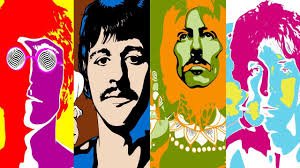Belief in coincidences is a theological category, so I don’t know if you buy into them or not. But on Sunday evening, I was at a conference in New York that happened to be taking place at my alma mater, Hebrew Union College-Jewish Institute of Religion in New York. In fact, I was sitting in the Beit Knesset, listening to a lecture by the great social activist Ruth Messinger, when I received a text on my phone telling me that Rabbi Leonard Kravitz had died.
The astonishing serendipity of that moment: This was my first time back on the New York campus of HUC-JIR in many years. And there I was, getting this news while I was in the very chapel where I often sat next to Rabbi Kravitz during Tefillah over the four years that I was a student there. The wave of emotions, memories, and warm feelings was just amazing.
I loved Rabbi Kravitz dearly. He was an expert in medieval Jewish philosophy and Maimonides in particular, and I cherish my copy of his scholarly work, The Hidden Doctrine of Maimonides’ Guide for the Perplexed (1988; only $230 on Amazon!).
I had the great pleasure of having him as my rabbinic thesis advisor all those years ago. Rereading that previous sentence, I wonder how many people look back on writing a graduate thesis as a “great pleasure.” I truly do, in large part because of my relationship with him. At that time, I used to meet with him on a weekly basis for an hour of studying the Rambam in his office. It wasn’t always germane to my thesis-writing, but it was like having a weekly one-on-one hevruta-study with someone who was a great scholar and a generous teacher.
Rabbi Kravitz’s classroom could be dizzying, because he tended to speak very quickly. There was a good reason for that: he would simultaneously be delivering a philosophy lecture, a Yiddish lesson, and doing standup comedy. So of course he had to speak three times faster than a typical teacher.
Here are a few more of my cherished memories of him:
· Delivering my final thesis to him in his office. He leapt up from behind his desk, grabbed my 116-page document with zeal, and cried, “This calls for a L’chayim!” And he went straight to his file cabinet and pulled out the bottle of scotch that was stashed away for just such a moment. (He was very partisan for his favorite distilleries. I remember bringing him a bottle of The Glenrothes in gratitude before graduation. He smiled and told me I was truly a disciple who had learned his lessons.)
· Once, some joker put a full-size poster of his namesake the rock star Lenny Kravitz on the door to his office, with dreadlocks flying in the air. Rabbi Kravitz got such a kick out of it that it stayed on his door for the whole semester.
· He was a kind and gentle soul, but definitely mastered the time-honored art of the putdown. If he disapproved, say, of a sermon that was delivered during Tefillah, he could say with perfect inflection, “That was nice.”
· And he had a wonderful sense of humor and was even a bit of a raconteur. I recall him once emerging from the elevator at HUC-JIR and saying in a loud voice to anyone in the vicinity, “My friends! Please! Study Torah! It’s not too late!” And then he whispered to me, out of the corner of his mouth, “It is too late, but don’t tell them.” (For that matter, he used to translate the Mishnah’s statement וְתַלְמוּד תּוֹרָה כְּנֶגֶד כֻּלָּם as: “It’s across the street.”)
· As a scholar of Maimonides, his philosophical outlook was decidedly rationalist (and he used to fondly remind us that he fit in quite well during his years at a Jesuit school). So one time, when he earnestly quoted a Hasidic story to me, I fell off my chair. “Rabbi Kravitz, did you just tell me a Hasidic story?!” He just laughed.
Even though he loomed quite large in my life—in my hevruta studies with Rabbi Ben Levy, it’s remarkable how frequently his name comes up—I hadn’t been in touch with him in a long time. Then, in 2022, I was receiving my Doctor of Divinity honorary degree from HUC-JIR, and Rabbi Joel Soffin gave me very important advice: to write to some of the professors who were especially important influences on me. Rabbi Kravitz was one of them, of course. Each of the professors whom I contacted wrote back to me, but I was bowled over when I got a phone call from Lincolnwood, IL. It was his daughter: “He wants to talk to you.” And suddenly I was his student again; he was speaking Yiddish, and quoting the Rambam, and saying, “Of course, I’m not telling you Torah you don’t already know…” We had a series of calls after that, and I feel so lucky to have resumed this relationship with such a unique and precious soul.
He died this week at 96 and is no doubt speaking a mile-a-minute in the olam ha-ba, explaining his elaborate map through the Guide of the Perplexed that he alone could decipher. He was a wonderful rabbi, mentor, and mensch. His memory is a blessing forever.
His legendary map through the Guide of the Perplexed - I have pages of this, in his handwriting.






